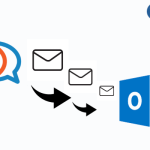In the hustle and bustle of our daily lives, the concept of taking breaks often falls by the wayside. However, effective break management is not just a luxury; it’s a necessity for maintaining optimal productivity and overall well-being. In this article, we’ll delve into the art and science of break management, exploring its benefits, strategies, and the role it plays in different work environments.
Understanding Break Management
The Importance of Breaks
Work without breaks is like a car without fuel – it might move for a while, but it’s destined to sputter to a halt. Breaks are not a sign of laziness; they are a crucial component of maintaining sustained energy and focus.
Types of Breaks
From micro-breaks lasting a few minutes to more extended, structured breaks, understanding the variety of breaks is essential for crafting an effective break management strategy.
The Science Behind Effective Breaks
Cognitive Benefits
Research shows that taking breaks enhances cognitive function, leading to improved creativity, problem-solving, and decision-making skills.
Physical Benefits
Beyond mental rejuvenation, breaks also contribute to physical well-being by reducing the strain on muscles and preventing the negative effects of prolonged sitting.
Strategies for Optimizing Breaks
Microbreaks
Short, frequent pauses during work can prevent burnout and boost productivity. We’ll explore how incorporating microbreaks into your routine can make a substantial difference.
Structured Breaks
Well-planned breaks, strategically placed throughout the day, can significantly impact productivity. Learn how to structure breaks for maximum effectiveness.
Mindful Breaks
Mindfulness during breaks is a powerful tool for combating stress and improving overall mental health. Discover techniques for incorporating mindfulness into your break routine.
Common Break Management Mistakes
Skipping Breaks
Contrary to popular belief, skipping breaks can hinder productivity rather than enhance it. We’ll uncover the pitfalls of forgoing breaks and explore alternatives.
Prolonged Breaks
While breaks are essential, overindulging in downtime can lead to a lack of motivation and focus. Find out how to strike the right balance.
Unproductive Break Activities
Not all breaks are created equal. Learn to identify and avoid activities that may be counterproductive to your goals.
Implementing Break Management in the Workplace
Company Policies
Employers play a crucial role in fostering a break-friendly environment. Explore how companies can implement policies that support effective break management.
Break Spaces
Designated break areas can significantly impact the quality of breaks. We’ll discuss the importance of creating inviting and comfortable break spaces.
Team Synchronization
Coordinating breaks among team members fosters a sense of unity and ensures that productivity remains high across the board. Discover strategies for synchronizing breaks in a team setting.
Personalizing Break Management
Identifying Personal Rhythms
Every individual has a unique rhythm when it comes to work. Learn how to identify your peak productivity periods and tailor your breaks accordingly.
Tailoring Breaks to Tasks
Not all tasks require the same type of break. We’ll explore how to customize your break routine based on the nature of your work.
Technology’s Role in Break Management
Apps for Break Reminders
In the digital age, technology can be a valuable ally in break management. Discover apps that help you stay on track with your break schedule.
Wearable Tech Integration
Wearable devices can provide real-time feedback on your physical and mental state, assisting you in optimizing your break routine. Learn how to integrate wearable tech into strategy.
Overcoming Challenges
Resistance from Employers
Some employers may be skeptical about the benefits of breaks. We’ll provide insights into addressing and overcoming employer resistance.
Balancing Collaboration and Isolation
In collaborative work environments, finding the right balance between team interaction and personal breaks is crucial. Explore strategies for maintaining harmony.
Coping with Remote Work Challenges
Remote work presents unique break management challenges. Discover tips for navigating these challenges and maintaining productivity in a virtual setting.
Measuring Break Management Success
Employee Feedback
Feedback from employees is a valuable metric for evaluating the effectiveness strategies. Explore methods for collecting and implementing feedback.
Productivity Metrics
Quantifiable metrics can provide concrete evidence of the positive impact of effective break management. Learn which metrics to track for a comprehensive evaluation.
Case Studies: Break Management in Action
Tech Industry Innovations
Leading tech companies are at the forefront of implementing innovative break management practices. We’ll examine case studies to uncover their strategies.
Traditional Work Environments
Even in more traditional work settings. Explore case studies highlighting successful and initiatives in diverse workplaces.
Future Trends
Adaptive Break Scheduling
The future of break management lies in adaptability. Discover how adaptive break scheduling is becoming a game-changer in maximizing productivity.
Virtual Reality Break Experiences
As technology advances, virtual reality is transforming break experiences. We’ll explore how VR is shaping the future.
Conclusion
In the fast-paced world of modern work, break management is not just a luxury; it’s a strategic necessity. By understanding the science, implementing effective strategies, and embracing personalization, individuals and companies can unlock


